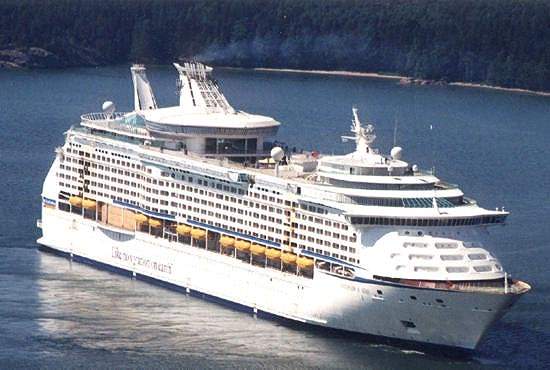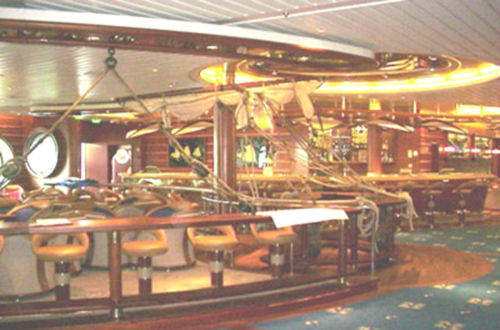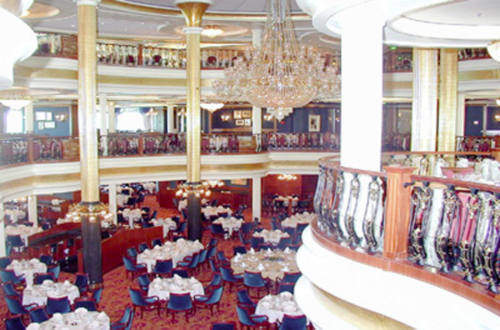With accommodation for 3,840 passengers, the Voyager of the Seas can truly claim to be the world’s largest cruise ship – for the millennium at least. Her owner, Royal Caribbean Cruise Line (RCCL) has left nothing to chance in the design of this luxurious mega-ship, and passengers are assured of both 24-hour entertainment and top-class facilities on-board.
Design
Voyager of the Seas was built at Kvaerner Masa Yard’s facility in Turku, Finland, at well over the original estimated cost of $500m. This is partly because her owner made a number of scale models of different concepts employed within the design to ensure that they would work in real life. Designs for her construction were approved by two classification societies: : Lloyd’s Register and Det Norske Veritas. During construction, the 142,000gt vessel was better known under the codename of Project Eagle or Eagle 1 – her delivery in Autumn 1999 was followed by sister ship Eagle 2 in 2000, and Eagle 3 in 2002.
Kvaerner Masa has a long relationship with RCCL, having constructed the company’s first four ships: Song of Norway, Nordic Prince and Sun Viking in the early 1970s, and the Song of America in 1982. The company’s Helsinki yard later undertook the complex task of lengthening both the Song of Norway and Nordic Prince in the first such operation ever performed on a passenger ship.
Facilities
The public spaces on board Voyager of the Seas include a four-deck horizontal promenade called the royal promenade, the first design of its kind on-board a cruise liner. It comprises a selection of shops, restaurants and entertainment areas, fronting on a winding street that is almost half the ship’s length. The royal promenade is punctuated by two eleven-deck atriums, the five-deck high la scala theatre with 1,350 seats and a variety of dining rooms, including a spectacular three-level main dining room with three separate themed dining areas. For entertainment, there is a 900-seat arena for a variety of shows, including ice dance. This is made possible by using a sliding floor underneath the stage, which reveals a proper temperature-controlled ice rink. The arena can also be used as a conference centre, concert hall, TV studio or two-deck disco. Those seeking exercise will find a nine-hole miniature golf course, a full size basketball court and a climbing wall.
Accommodation
There are 1,557 cabins, of which 757 are situated on the outside with balconies, giving a double occupancy capacity of 3,114 or 3,840 in total. Unusually for a cruise vessel, some 10% of the cabins face inwards with an atrium view, and these are priced higher than the equivalent ocean-view rooms.
Special attention has been given to the 1,180 crew who are accommodated in 667 cabins fitted with TV and refrigerator. They have a recreation deck, two whirlpools, a gymnasium, three dining rooms and a disco at their disposal for when they are not attending the passengers.
All cabin construction has been carried out at Kvaerner Masa’s Piikio Works and, as they are of modular design, each cabin has its own integral air-conditioning unit in the form of a fancoil, which creates more space and is deemed more efficient. RCCL estimates that the space saving on air-conditioning has allowed it to install 40-50 more cabins.
Propulsion
The main engine power for Voyager of the Seas is provided by six Wärtsilä Vasa 46 diesel engines, giving a total output of 75,600kW and creating a service speed of around 22 knots. The engines have been modified by approximately 5% to accommodate three 14MW Azipods – two azimuthing and one fixed. In addition, there are four bow thrusters and two stern thrusters.








